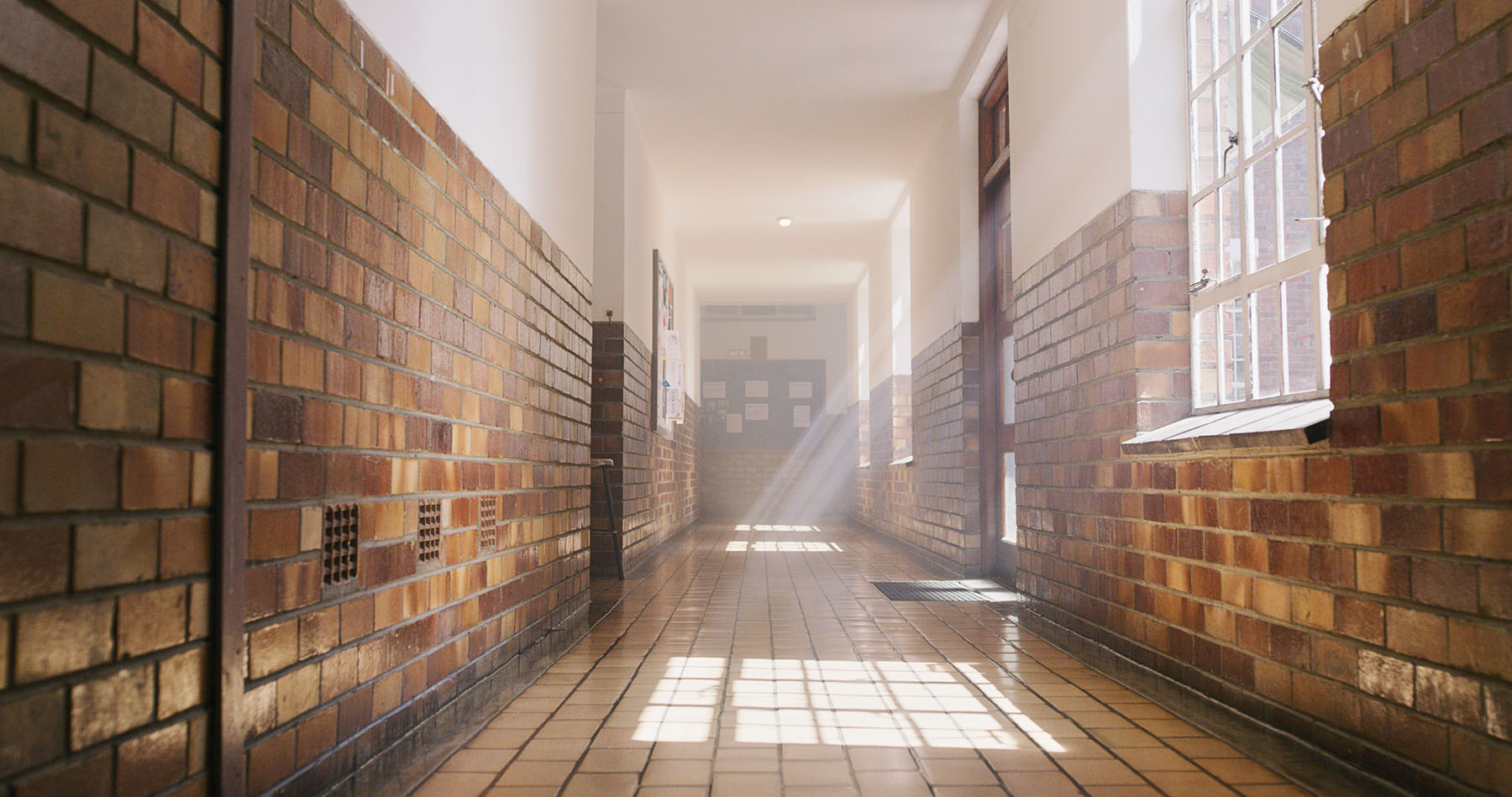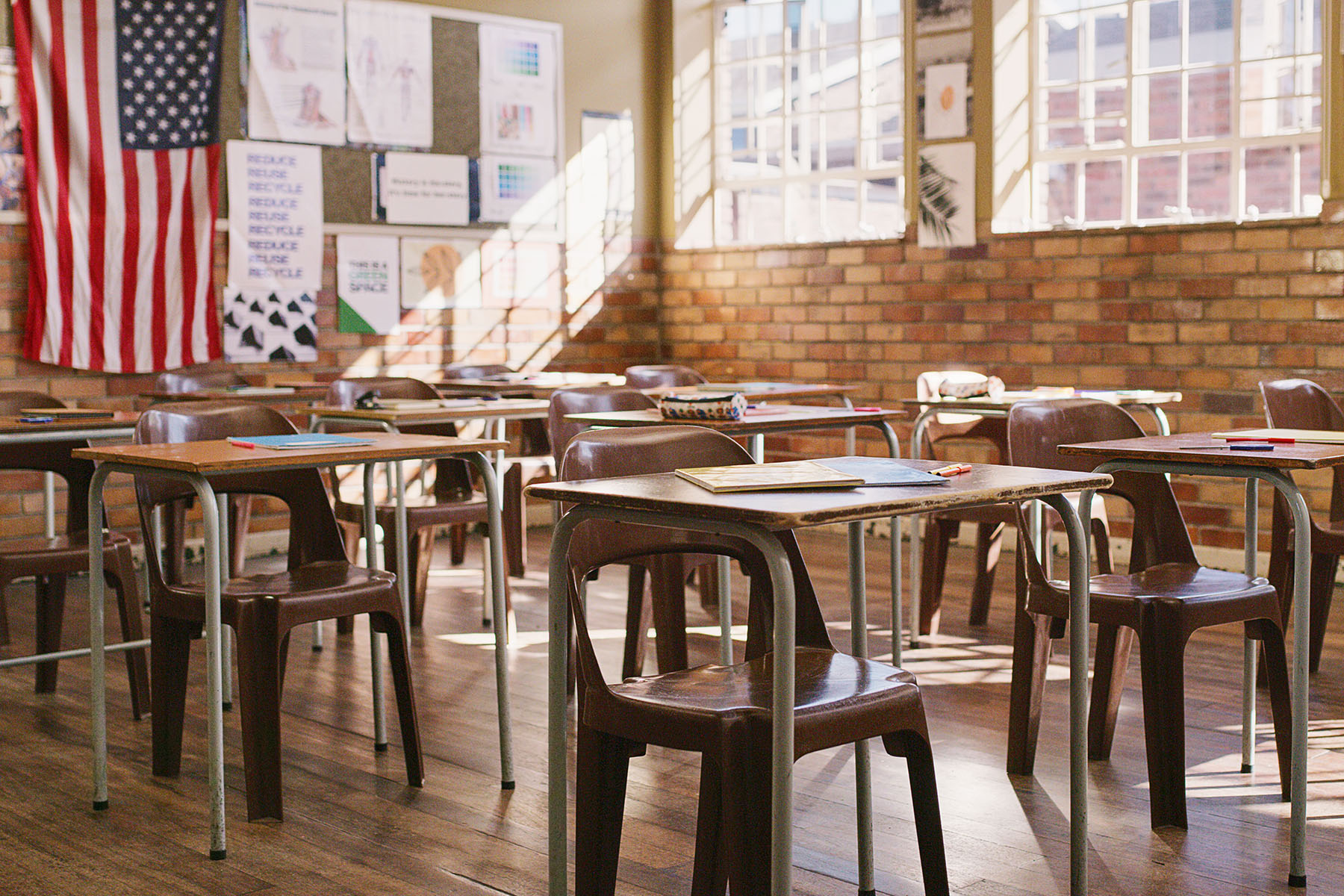Your trusted source for contextualizing climate and education news. Sign up for our daily newsletter.
When her children’s school year kicked off September 7, Keri Rodrigues expected them to close out the week in classes. Instead, she got a robocall and a text message from Woburn Public Schools, just outside Boston, alerting her that schools would be in session for only a half day September 8 due to heat.
“It’s pretty frustrating as a parent, especially being a parent that knows a thing or two about what our kids are going through and how critical it is for them to spend as much time getting back into the classroom as quickly as possible because they’re still trying to recover after the pandemic,” said Rodrigues, a mother of three and president of the National Parents Union, a network of parent groups advocating for families in education. “It’s very frustrating to have the second day of school now cut in half and have to run around, rearrange your schedule.”
Last week in states including New York, Wisconsin, Michigan, Massachusetts and Pennsylvania, schools were dismissed early or had to cancel entire days of classes because of hot weather. The scheduled changes drew attention to just how many of the nation’s campuses lack air-conditioning and other amenities to keep kids safe when temperatures soar, especially in places more associated with record cold than record heat.
Across the country, cities sweltered under record-breaking temperatures throughout July and August. As a result, this summer broke global records, becoming the hottest on record, according to the European Union Climate Change Service.
In recent years, this extreme heat, as well as more frequent heat waves, have put pressure on school districts to adapt to the climate crisis to protect students. In the East and Midwest, temperatures reached well over 80 degrees in September, making it difficult for much learning to occur in old buildings without adequate cooling. New infrastructure, which will require an infusion of funding to schools, is needed to accommodate students, educators and advocates told The 19th.
According to a report released by the Government Accountability Office in 2020, about 36,000 schools needed updates to their HVAC systems to provide proper air-conditioning and heating. Many schools don’t have working air-conditioning, which hadn’t been much of a problem until recently, since kids were outside of school during the hottest part of the year.
When temperatures rise at Lea Elementary in West Philadelphia, the students feel the effects right away, said Tonya Ware, a fifth-grade math and social studies teacher. After the first day of school on September 5, more than 80 schools in the district closed early because of hot weather.
“It’s been very hot, so they’re tired,” Ware said. “They’re not focusing, and it was kind of rough trying to teach and keep them engaged. They’re constantly asking to go get water and we can’t get upset about it because it’s hot.”
Ware serves as a Philadelphia Federation of Teachers (PFT) building rep at her school, so when the air-conditioning or other amenities aren’t working, her colleagues let her know and she informs the administration. In her building, which is more than a century old, she said, about 60 percent of classrooms have air-conditioning units, but one part of the building has no working air-conditioning at all.
Although her classroom has air-conditioning, it is not working properly, leaving the room warm instead of cool. She has a fan, but it doesn’t help, she said.
“One of my students just started crying,” Ware said. “I thought somebody did something to him, but he said his head just started throbbing. When I spoke to the parents later on, they were like, ‘Yeah, when it’s hot, he does get migraines.’”
Other kids suffer from nosebleeds or asthma attacks when the temperatures rise, Ware said, so as inconvenient as it may be for parents to get their children in the middle of the day, it’s in students’ best interest to dismiss school early.
“It’s not conducive to learning at all,” she said. To avoid temperature-induced early dismissals, the School District of Philadelphia began the 2023-24 academic year in September after several years of August starts, but the weather is still too hot, Ware said. She believes the solution is to refurbish old school buildings, some of which have asbestos and mold in addition to poor air circulation and a lack of central air-conditioning.
“The average age of a Philadelphia school building is about 76 years old,” said PFT President Jerry Jordan, who emphasized that many of the schools closing early in Philadelphia and nationally have large populations of Black and Brown children. “We have some schools that are over 100 years old, and as a result of that, the . . . the infrastructure is old. The buildings need to be rewired in order to install window units in each classroom. It’s a really, really big problem, and the teachers are correct when they say it does have a very negative impact on their ability to be able to teach children.”

The School District of Philadelphia did not respond to The 19th’s request for comment about early dismissal.
A 2018 study from the Harvard Kennedy School found that exposure to higher temperatures in schools were linked to a drop in scores on the PSAT, a standardized test given in high school. Low-income and students of color were shown to be the most impacted by the heat because their schools were less likely to have cooling infrastructure. Air-conditioning could substantially benefit these students and help close what’s called the racial achievement gap, the study authors wrote.
Tiana Starks, a mother of two sons, ages 7 and 12, said over the last five years the Southfield Public School District in Michigan has had to cancel school on numerous occasions due to the heat, including last Tuesday.
Even on days when the heat doesn’t warrant a closure, the schools get really hot since they don’t have air-conditioning, teachers have told Starks. Her son comes home some days complaining about the temperatures.
Starks, who works with We the People of Detroit, an environmental justice organization, said the issue with schools is clearly divided by race, with more affluent neighborhoods not experiencing the same closures.
“Michigan is not generally known for extreme heat, so when it gets hot that creates a problem for some of our schools that don’t have air-conditioning, which are generally in Black and Brown communities,” she said. “I would like to see a country where things are more equitable and our students wouldn’t have to worry and can just focus on their schooling.”
In Philadelphia, Ivey Welshans, who oversees special education at Middle Years Alternative School, says that the school building is at least 100 years old with an electrical system that can’t withstand air-conditioning.
“We need to be valued, and not only the staff, but students, because our teaching conditions are their learning conditions, and my teaching conditions stink,” Welshans said. “The district really needs to develop a plan. All students in the state of Pennsylvania should have access to clean buildings, safe buildings that are up to date and up to code.”
Although the School District of Philadelphia has a school building improvement plan, it lacks the funding needed to enact it. Superintendent Tony B. Watlington announced in March that it would require about $5 billion to renovate district buildings and get them up to code. Chronic underfunding prevents the school district from completing all the repairs needed, but the superintendent noted that it is using $325 million of federal stimulus funding for major facilities projects and renovations over a four-year period. The University of Pennsylvania has also provided the district with $100 million to respond to environmental issues in its buildings. Watlington emphasized then that the district can’t create change without help.
“Unlike other school districts, the School District of Philadelphia is legally not permitted to raise its own taxes,” he said in the spring. “Our funding stream is almost entirely dependent on the state and city. For years, that funding has failed to meet the needs of our young people, a fact underscored by the recent finding of the Commonwealth Court, that low-wealth districts such as ours have been significantly shortchanged.”
Although Democratic legislators have tried to route more money to Pennsylvania schools, Republicans have stymied their efforts in a legislature split along partisan lines. That leaves schools without resources to improve aging infrastructure.
“There’s never been enough money to maintain those buildings properly,” Jordan said. “And we’re paying the price and our kids are paying the price because they are subjected to sitting in very, very hot, unhealthy environments.”
The heat-related early dismissals at her school upended the first week of classes, Welshans said. Teachers typically use the beginning of the school year to establish rules and routines and get acquainted with students and their families. Ending school early made it difficult for teachers to pull that off, though Welshans understands why schools closed in the afternoons. She said at 8 a.m., it was already 80 degrees in her building. The mercury only rose with each hour.
“I’m grateful for the early dismissal, because I was literally dying,” she said. “It’s like a hot box. People are miserable. We’re sweating. You sweat when you sit. You don’t feel good. It’s just an awful environment.”
She acknowledges that early closures are also challenging for parents, especially parents of special education students who need assistance getting home or caregivers who can attend to them at home.
“It is definitely disruptive, but in the same regard, they don’t want their kids sitting in a sweat box either,” Welshans said.
Early dismissal is more than just an inconvenience for working parents who have to leave their jobs to pick up their children, Rodrigues said. If their kids are small, or have special needs, the parents might have to miss out on a day’s pay.
“What people don’t understand is how even a day off of work can throw parents into chaos,” she said. “That’s an entire grocery bill. That’s food on the table. That’s gas money. People are living hand-to-mouth right now, paycheck-to-paycheck. So when we make these kinds of decisions, they have an extraordinary impact. It puts them [parents] under even more stress in a very difficult economic time.”
Starks, from Michigan, said she’s lucky she has the flexibility to work from home, but it’s still stressful when she has to watch her children on days when school is closed. Now, her district makes up for lost days at the end of the year, through remote learning.
“In terms of parenting this is probably the most difficult thing,” she said. “I now have to be a teacher while trying to work.”
The fact that climate change isn’t going to disappear means that schools must make preparations to ensure that students still receive an education on hot days, Rodrigues said. She urges districts with old school buildings to install air filtration systems and purchase portable air purifiers and portable air-conditioning units to keep kids in school when warm weather makes classrooms hot and stuffy.
“The planet is on fire,” she said. “It’s something we know, and I never understand why education leaders are in a bubble. Obviously, with global warming, there’s gotta be preemptive moves that we’re making so that we are evolving to make sure that our kids’ needs are met. We can think collaboratively and take a look around and understand how these outside issues are going to end up impacting our kids and our education system. We gotta start doing better. It’s 2023.”
Jessica Kutz contributed reporting.







